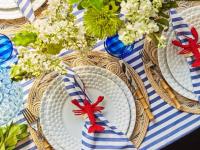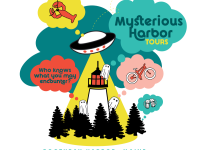Philip Conkling: The view from offshore
PENOBSCOT BAY — This past spring, a close friend who turned 60 invited us to his birthday destination celebration at the remote end of one of smallest Hawaiian Islands. But feeling penurious at the end of a colder than average winter, we suggested we would instead organize an island birthday adventure closer to home, which we held this past weekend.
It was a reunion for three of the principals, with assorted wives and children and a pair of dogs that are apparently too sensitive to be boarded ashore. The three of us had known each other for all of our adult lives. We had helped each other through the death of a spouse, child-rearing, several divorces, career changes, and a life changing illness; in short, through all the really critical times of our lives and had emerged, if not wealthier, hopefully a little wiser.
By 1900, puffins had become all but extinct on Maine's outer islands. A single pair of puffins remained on Matinicus Rock, where lighthouse keepers had heroically protected seabirds from the plume hunters who collected feathers for ladies' hats.
We planned to rendezvous in Carver's Harbor, Vinalhaven, to take advantage of the take-out window at the blessed Harbor Gawker, before heading out to the edge of the known world at Seal Island, where at least one of us intends to have his ashes scattered. Seal Island is a like a piece of a meteorite from outer space that fell into the ocean 22 miles offshore. It is a long, narrow island that only slowly rises up on the horizon, even on the clearest of days, appearing first as an indistinct gray-white shimmer, before finally revealing its verdant sloping green meadows against its weathered granite bones from a mile our so away.
Each of us had spent formative time on Seal Island. One as an ornithologist working to reestablish Atlantic puffins — Fratercula arctica, "little brother of the Arctic," on the island that had been their largest breeding colony in the 19th Century before fishermen collected them in nets to use as bait. Another as a botanist establishing long-term vegetation plots on the island following a disastrous meadow fire that burned in the peat throughout the summer of 1978 and the third as a photographer whose island photographs had become icons.
Our wives and children, though curious, were happy to go along, but were perhaps less enthusiastic after rolling for over an hour in the long swells left over from an earlier blow. But once we hove to in the lee of Seal and began to see the rafts of the little brothers of the Arctic, all hands were excitedly at the rails to observe the rare spectacle presented by an outer island seal and seabird colony.
By 1900, puffins had become all but extinct on Maine's outer islands. A single pair of puffins remained on Matinicus Rock, where lighthouse keepers had heroically protected seabirds from the plume hunters who collected feathers for ladies' hats. But after Steve Kress, a seabird biologist at the National Audubon Society's Hog Island station in Muscongus Bay and his sidekick Richard Podolsky, now aboard with us, hand reared 500 puffin chicks in five years, their extraordinary effort paid off at Eastern Egg Rock when an adult, reared as a chick returned to breed.
As a result of their work and that of hundreds of others, there are now five puffin colonies in the Gulf of Maine, the largest of which is on Seal Island, where we watched at least 100 of the approximately 500 pairs of multi-colored puffins that nest here, float and fly by, amid the din of tern and gull cries and the occasional croak of a raven. In the calm water around the boat, the occasional slap of a harbor seal flipper broke the surface, directed dismissively our way, and several enormous gray seals rose, with their horsehead profiles to consider our presence. Everything all around us spoke of marine abundance.
As you float just offshore, you cannot fail to be impressed by the raucous energy of a seabird nesting colony early in the season when the frantic behavior of all the avian energy that has been stored up for a year bursts into frenzied activity for about a month. Not only puffins and Arctic terns careened by, but also razor billed auks, murres and great cormorants that have recently crossed the Atlantic Ocean from Europe to begin nesting on Maine's offshore islands. As we watched the earnest seabird researchers ashore head for their blinds to record all this activity, it was plainly evident that none of the rarer and smaller seabirds would be here if it were not for these two-legged, modern-day light keepers keeping away predators, especially the voracious black backed gulls that swallow them whole.
On the way back to Vinalhaven, we could not resist rounding up at Brimstone Island's beach, where the most elegant polished black stones on this side of paradise are piled by their billions. As we approached the beach, everyone's attention was arrested by the hunched silhouettes of — count them — one, two, three, four, five, six, seven bald eagles side by each on a piece of driftwood. They lumbered into the air soaring disdainfully over us before cresting over the island, perhaps to prospect for marine delicacies on the backside beach. It was not until we scrambled ashore in the dinghy to discover three baby seals at the tideline on the far side of the beach that we presumed to understand the great interest of all these eagles, which suggested the avian version of a hospice group.
Even though we were all awed at the spectacles of abundance we had witnessed, it is also clear that the fate of all of the species we surveyed — from puffins to auks to seals and eagles — have both suffered from, and been benefited by, our intervention, for better and worse. Amidst all this wild creation, humans are the real keystone species here.
Philip Conkling is the founder of the Island Institute. Additional writings are available at www.conklingassociates.com
Event Date
Address
Penobscot Bay, ME
United States








































